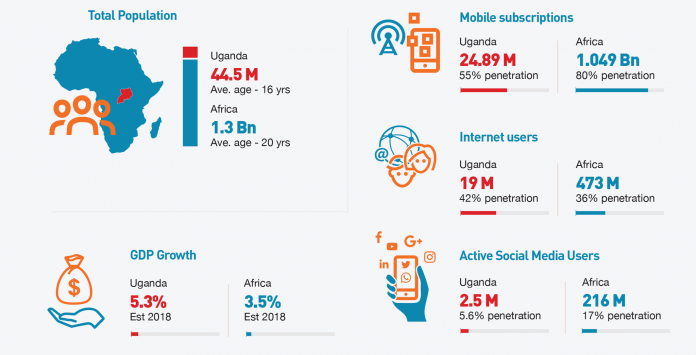Africa’s biggest online shop, Jumia, has today launched the 2019 Mobile report and Mobile week.
Mr. Ron Kawamara, CEO Jumia Uganda, who presented the mobile report said, “Jumia Uganda prides itself in being at the forefront of not only offering Ugandans unprecedented services in the e-commerce space but also, presenting unique insights into key trends of mobile penetration in Uganda and the impact of the landscape to the digital industry.”
According to the report, he said, as the country’s digital economy continues to spur, the average Ugandan consumer is increasingly getting connected, with 42% of the population in Uganda now connected to the Internet (19 million). Mobile subscription penetration is at approximately 80%, with 25 million Ugandans owning a mobile device, a factor that has continued to shape and make the landscape competitive.
Mr Kawamara noted that smartphone penetration has steadily increased across the country, and so has the usage tremendously soared. In the larger African continent, smartphone adoption was recorded at 36% penetration rate, equating to about 255 million smartphone devices and with Jumia launching its “Mobile Week” from April 8th to 21st, 2019 to enable members of the public purchase smartphones and accessories at discounted prices.
He explained that the mobile phone remains the most popular item on the Jumia online store, both in terms of the number of items sold and in terms of the revenue it generates. Hence giving it its own tier-one campaign was an obvious choice. This Mobile week is expected to be the biggest yet. Visitors to the site www.jumia.ug and to the Jumia mobile app will have an opportunity to claim some of the biggest discounts on thousands of Mobile related items.
He also added that E-commerce businesses need to adapt to this type of mobile customer, who goes online using a low specification smartphone and does not have a lot of data. Jumia has developed progressive web apps to bridge the gap between conventional web pages and native mobile applications. The result is a lightweight, faster web application that drastically improve the user experience on mobile. For instance, not only will the customers get a faster loading e-shop, but will also get push notifications from it and even be able to browse the shop while offline.









